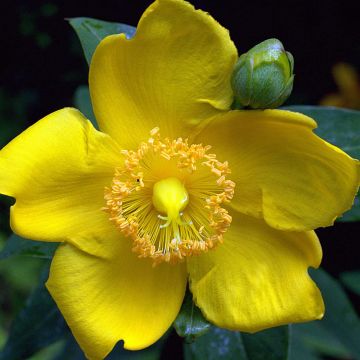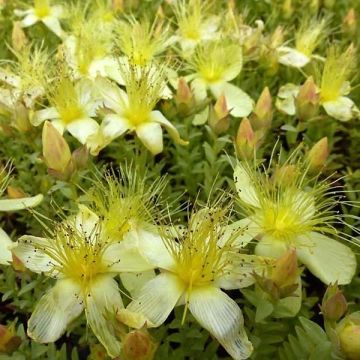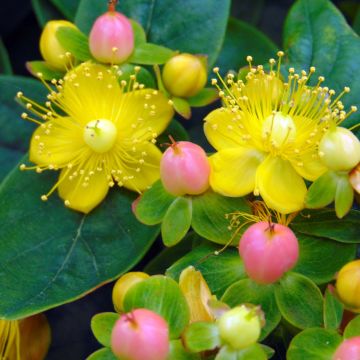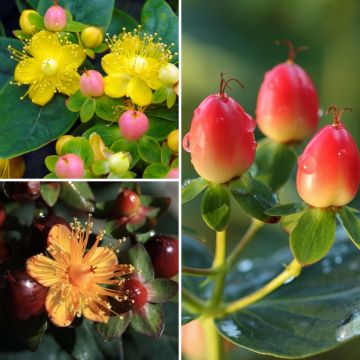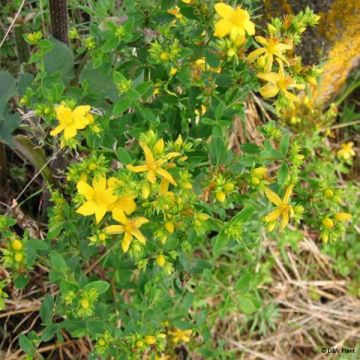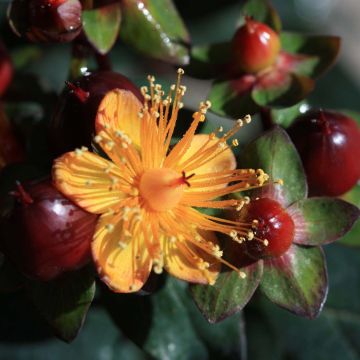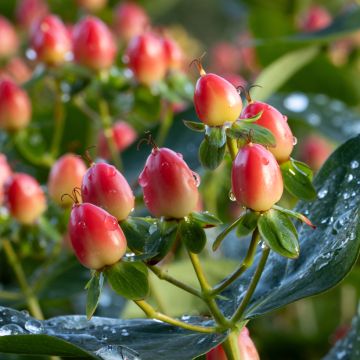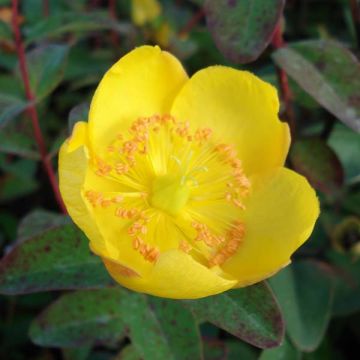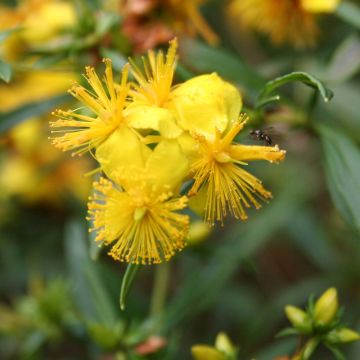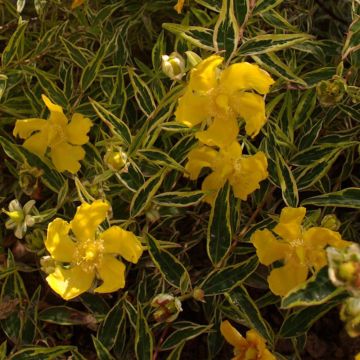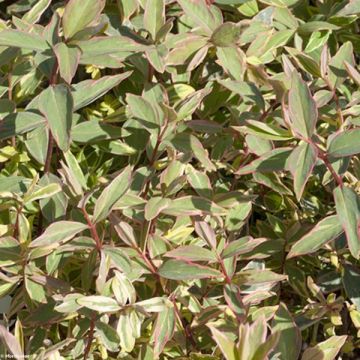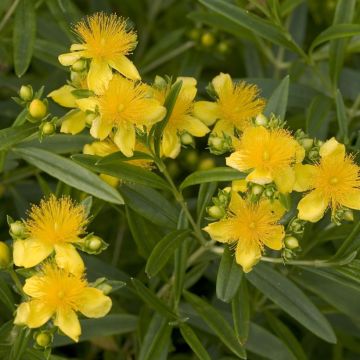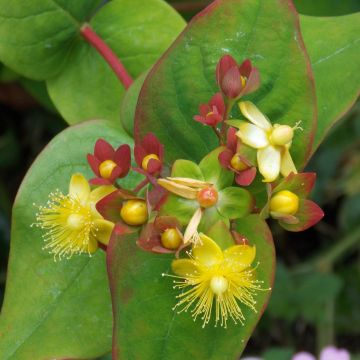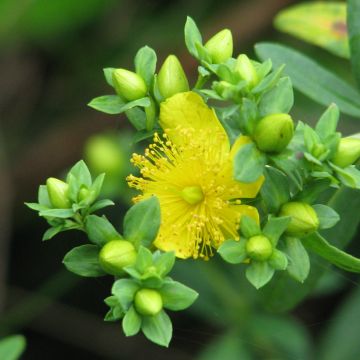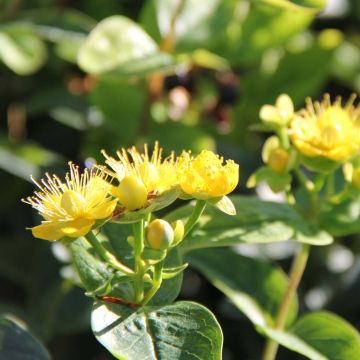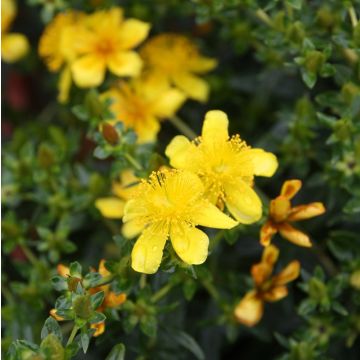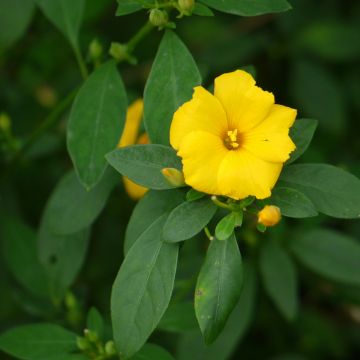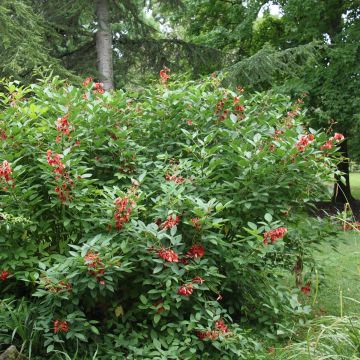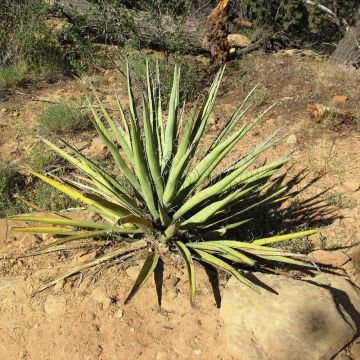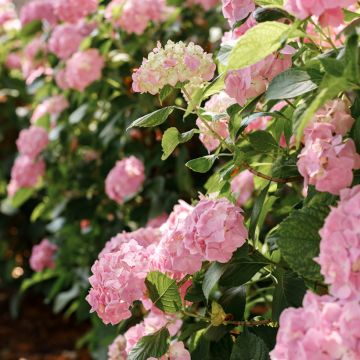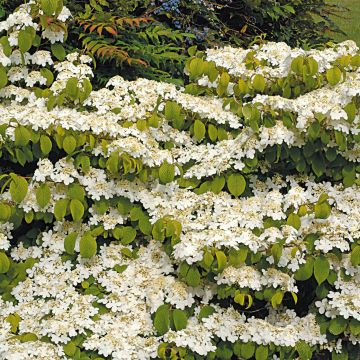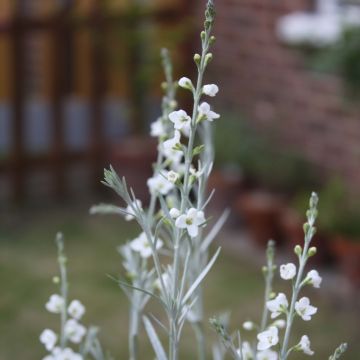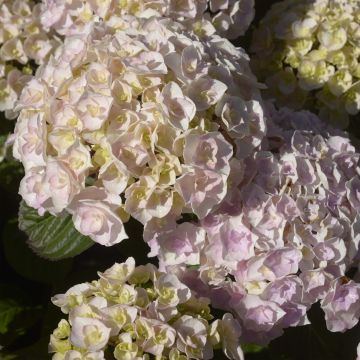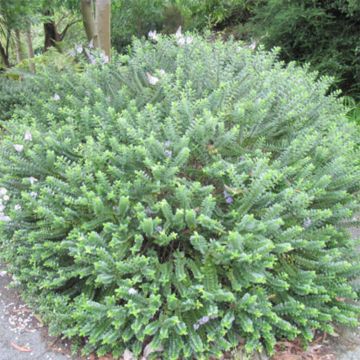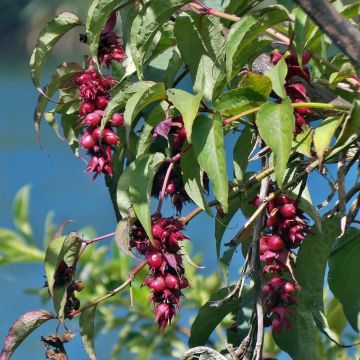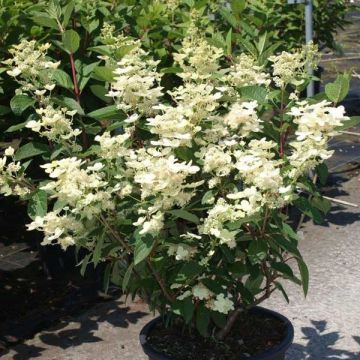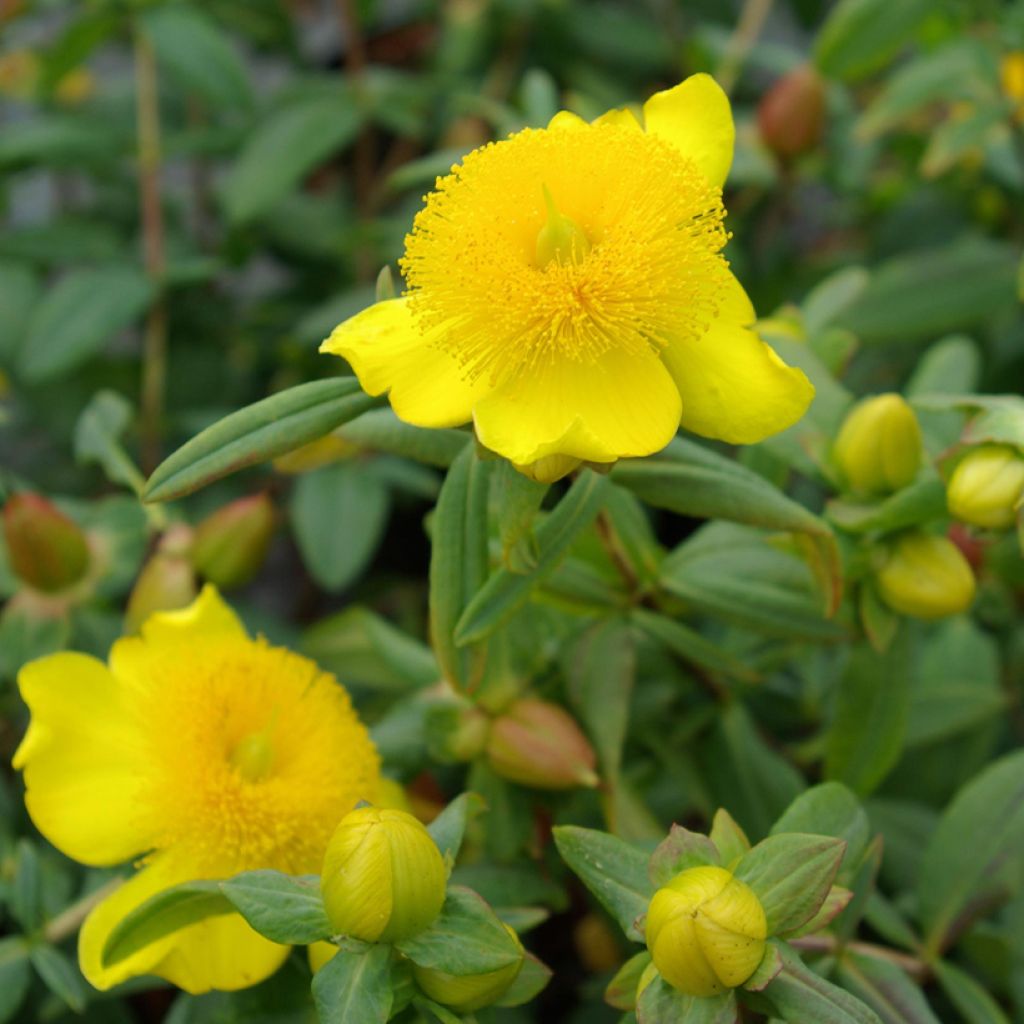

Hypericum frondosum Sunburst - St. John's Wort
Hypericum frondosum Sunburst - St. John's Wort
Hypericum frondosum Sunburst
St. John's Wort
Why not try an alternative variety in stock?
View all →This plant carries a 24 months recovery warranty
More information
We guarantee the quality of our plants for a full growing cycle, and will replace at our expense any plant that fails to recover under normal climatic and planting conditions.
From €5.90 for pickup delivery and €6.90 for home delivery
Express home delivery from €8.90.
Does this plant fit my garden?
Set up your Plantfit profile →
Description
Hypericum frondosum 'Sunburst' is a well-known and appreciated cultivar of St. John's Wort that forms a dense, compact, and upright bush. In summer, its large golden-yellow flowers and clusters of dark red fruits bring life to its beautiful glossy blue-green leaves. The mature stems exfoliate from cinnamon to purple. All these features make it a plant of enduring interest for many months. It thrives in full sun or partial shade in borders, rockeries, edges, or even in a container on the terrace.
The 'Sunburst' St. John's Wort belongs to the family of Clusiaceae. It originates from the species Hypericum frondosum, native to the central and southeastern United States. St. John's Wort forms compact bushes that flower abundantly from the first year in the garden and bear fruits generously and regularly. The 'Sunburst' cultivar reaches a mature size of 90cm to 1.20m in all directions depending on the growing conditions. It has a dense and rounded habit, with a spreading port supported by reddish to purplish stems. The stems bear long, semi-evergreen to evergreen, entire leaves. These elongated, pointed, leathery leaves are a beautiful dark bluish-green, turning reddish under the influence of winter cold. It flowers for almost four months of the year, from June-July to September-October, with a break during the hottest weeks. The flowers, produced abundantly, are 5cm in diameter and composed of 5 rounded, golden-yellow petals arranged in an open cup. The centre of the flower is occupied by a crown of protruding, orangish stamens. This flowering is followed by the formation of a few conical fruits that turn red and brown when ripe.
St. John's Wort is appreciated for its very long flowering period and its ease of cultivation in all types of soil and under all climates, even by the seaside and in shade. If you like yellow flowers, 'Sunburst' is one of the small bushes to plant in a brand new garden, even if you are a beginner in gardening. It excels in low shrub borders or perennial beds, but also on the terrace or balcony, planted in a large pot. For example, it can be combined with summer-flowering perennials such as flamboyant Crocosmias, Agastaches, Echinops, and Rudbeckia. Also consider foliage plants such as Euphorbias or Physocarpus. Its long-lasting flowers and fruit-laden branches can be used in floral arrangements.
Report an error about the product description
Plant habit
Flowering
Foliage
Botanical data
Hypericum
frondosum
Sunburst
Clusiaceae
St. John's Wort
Cultivar or hybrid
Other Hypericum - St.John's Wort
Planting and care
Plant 'Sunburst' Hypericum in a very sunny location north of the Loire, or in partial shade, in a warm climate, sheltered from the wind. Its foliage can be damaged by excessive sun. This St. John's Wort adapts to almost all soils, as long as they are well prepared. The soil pH is indifferent to it, but it should not be excessively acidic or excessively chalky. It needs a light, well-drained soil, deep enough to allow it to better withstand dry summers. It is hardy, resistant to diseases, and its enemies are rare. Carry out shaping pruning after flowering, or in early spring.
Planting period
Intended location
Care
This item has not been reviewed yet - be the first to leave a review about it.
Summer-flowering shrubs
Haven't found what you were looking for?
Hardiness is the lowest winter temperature a plant can endure without suffering serious damage or even dying. However, hardiness is affected by location (a sheltered area, such as a patio), protection (winter cover) and soil type (hardiness is improved by well-drained soil).

Photo Sharing Terms & Conditions
In order to encourage gardeners to interact and share their experiences, Promesse de fleurs offers various media enabling content to be uploaded onto its Site - in particular via the ‘Photo sharing’ module.
The User agrees to refrain from:
- Posting any content that is illegal, prejudicial, insulting, racist, inciteful to hatred, revisionist, contrary to public decency, that infringes on privacy or on the privacy rights of third parties, in particular the publicity rights of persons and goods, intellectual property rights, or the right to privacy.
- Submitting content on behalf of a third party;
- Impersonate the identity of a third party and/or publish any personal information about a third party;
In general, the User undertakes to refrain from any unethical behaviour.
All Content (in particular text, comments, files, images, photos, videos, creative works, etc.), which may be subject to property or intellectual property rights, image or other private rights, shall remain the property of the User, subject to the limited rights granted by the terms of the licence granted by Promesse de fleurs as stated below. Users are at liberty to publish or not to publish such Content on the Site, notably via the ‘Photo Sharing’ facility, and accept that this Content shall be made public and freely accessible, notably on the Internet.
Users further acknowledge, undertake to have ,and guarantee that they hold all necessary rights and permissions to publish such material on the Site, in particular with regard to the legislation in force pertaining to any privacy, property, intellectual property, image, or contractual rights, or rights of any other nature. By publishing such Content on the Site, Users acknowledge accepting full liability as publishers of the Content within the meaning of the law, and grant Promesse de fleurs, free of charge, an inclusive, worldwide licence for the said Content for the entire duration of its publication, including all reproduction, representation, up/downloading, displaying, performing, transmission, and storage rights.
Users also grant permission for their name to be linked to the Content and accept that this link may not always be made available.
By engaging in posting material, Users consent to their Content becoming automatically accessible on the Internet, in particular on other sites and/or blogs and/or web pages of the Promesse de fleurs site, including in particular social pages and the Promesse de fleurs catalogue.
Users may secure the removal of entrusted content free of charge by issuing a simple request via our contact form.
The flowering period indicated on our website applies to countries and regions located in USDA zone 8 (France, the United Kingdom, Ireland, the Netherlands, etc.)
It will vary according to where you live:
- In zones 9 to 10 (Italy, Spain, Greece, etc.), flowering will occur about 2 to 4 weeks earlier.
- In zones 6 to 7 (Germany, Poland, Slovenia, and lower mountainous regions), flowering will be delayed by 2 to 3 weeks.
- In zone 5 (Central Europe, Scandinavia), blooming will be delayed by 3 to 5 weeks.
In temperate climates, pruning of spring-flowering shrubs (forsythia, spireas, etc.) should be done just after flowering.
Pruning of summer-flowering shrubs (Indian Lilac, Perovskia, etc.) can be done in winter or spring.
In cold regions as well as with frost-sensitive plants, avoid pruning too early when severe frosts may still occur.
The planting period indicated on our website applies to countries and regions located in USDA zone 8 (France, United Kingdom, Ireland, Netherlands).
It will vary according to where you live:
- In Mediterranean zones (Marseille, Madrid, Milan, etc.), autumn and winter are the best planting periods.
- In continental zones (Strasbourg, Munich, Vienna, etc.), delay planting by 2 to 3 weeks in spring and bring it forward by 2 to 4 weeks in autumn.
- In mountainous regions (the Alps, Pyrenees, Carpathians, etc.), it is best to plant in late spring (May-June) or late summer (August-September).
The harvesting period indicated on our website applies to countries and regions in USDA zone 8 (France, England, Ireland, the Netherlands).
In colder areas (Scandinavia, Poland, Austria...) fruit and vegetable harvests are likely to be delayed by 3-4 weeks.
In warmer areas (Italy, Spain, Greece, etc.), harvesting will probably take place earlier, depending on weather conditions.
The sowing periods indicated on our website apply to countries and regions within USDA Zone 8 (France, UK, Ireland, Netherlands).
In colder areas (Scandinavia, Poland, Austria...), delay any outdoor sowing by 3-4 weeks, or sow under glass.
In warmer climes (Italy, Spain, Greece, etc.), bring outdoor sowing forward by a few weeks.

































